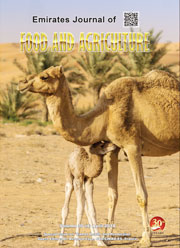SEPTORIA LEAF BLOTCH AND YELLOW RUST CONTROL BY: FUNGICIDE APPLICATION OPPORTUNITY AND GENETIC RESPONSE OF BREAD WHEAT VARIETIES
DOI:
https://doi.org/10.9755/ejfa.2016-04-345Keywords:
bread wheat, septoria leaf blotch, yellow rust, genetic responseAbstract
Septoria leaf blotch and yellow leaf rust are the most important foliar bread wheat diseases that cause significantly yield losses in Portuguese wheat yield. In the present study, field experiments were conducted during 2013/2014 and 2014/2015 wheat growing seasons to evaluate the effect of a fungicide (Bixafen + Protioconazol) on septoria leaf blotch and yellow rust attacks on bread wheat. This evaluation was accessed by: a) checking the opportunity of fungicide application in two different phenological stages (GS 33-34) and (GS 43-44); b) analyzing the genetic resistance of each variety against the attack of these pathogens; c) finding differences on yield components (thousand kernel weight and grains/m2), grain yield and test weight when fungicide was applied one or two times, during the crop cycle. This study showed that: 1) susceptible varieties, with high levels of coefficient of infection, are beneficed with two fungicide applications, at GS 34 plus GS 47, with increases on yield components, yield/ha and test weight; 2) in moderate resistant varieties, with low levels of coefficient of infection, it is justified a preventive fungicide treatment at GS 34, to control the infectious focus and to protect leaves; 3) resistant varieties don´t need a disease control, however, results showed that with two fungicide applications, grain yield and test weight increases significantly.










 .
. 